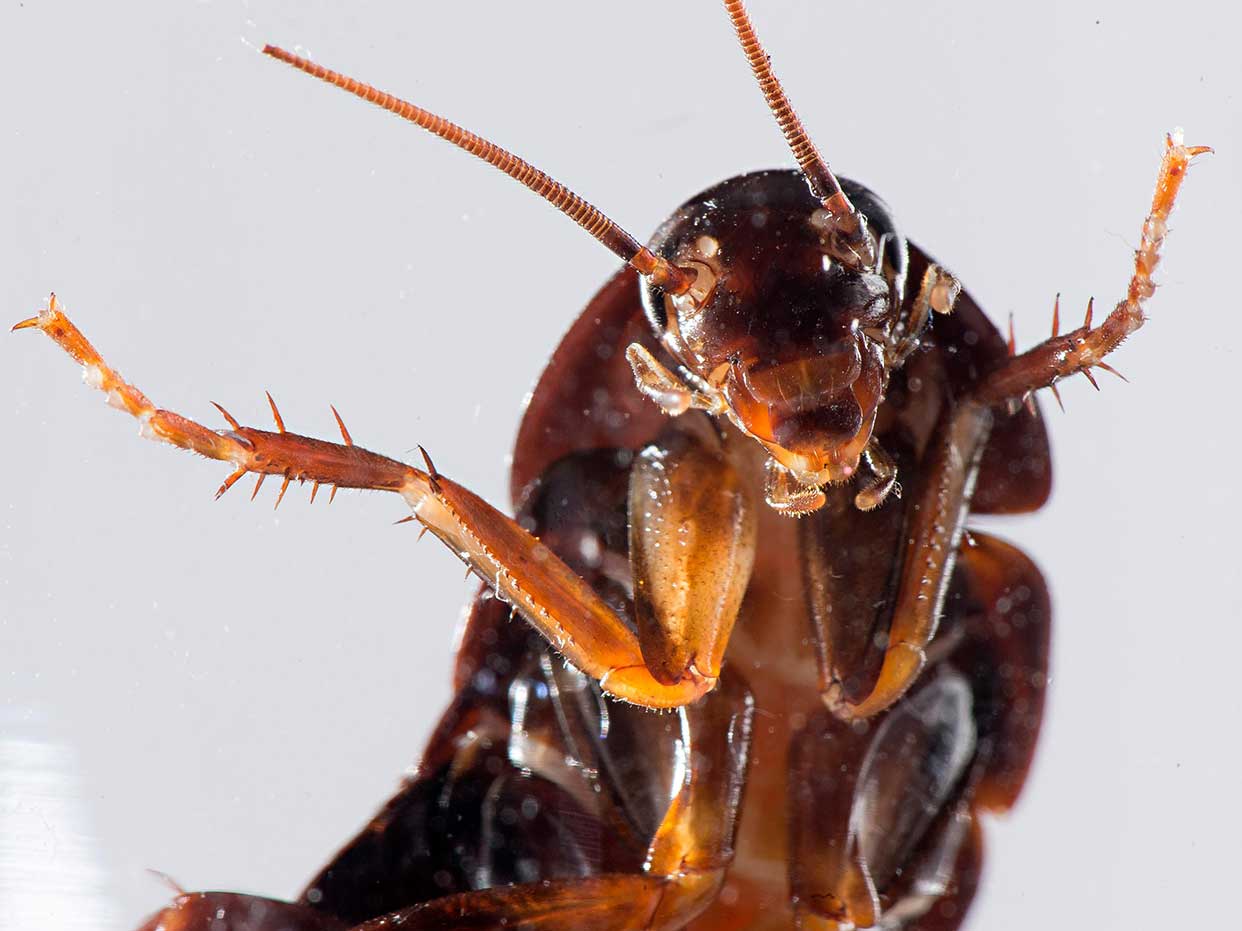Why cockroach milk is the ultimate ‘superfood’
Scientists say the fluid is ‘among the most nutritious substances on the planet’

Forget oat, soy or almond milk… one day, you may be able to enjoy a cockroach milk latte.
Social media lit up on Tuesday night when Marie Claire reshared an article first published in August 2016 claiming that cockroach milk was the next big superfood trend.
But how to you go about milking a cockroach? Put the image of a three-legged stool out of your mind, because the “milk” is actually a protein-dense fluid produced by the female Pacific beetle cockroach.
The Week
Escape your echo chamber. Get the facts behind the news, plus analysis from multiple perspectives.

Sign up for The Week's Free Newsletters
From our morning news briefing to a weekly Good News Newsletter, get the best of The Week delivered directly to your inbox.
From our morning news briefing to a weekly Good News Newsletter, get the best of The Week delivered directly to your inbox.
The roach, native to Hawaii, is among the handful of insects which give birth to live young rather than laying eggs, NPR explains.
As the embryos grow inside her, “she feeds them a pale, yellow liquid milk’ from her brood sack”.
Admittedly, it’s not the most mouth-watering prospect. Perhaps The Washington Post’s description can win you over: “Slice open an embryonic roach under a microscope, and the crystals spill out in a shower of nutrient-dense glitter.”
So far, so unappetising. But scientists say the hyper-nutritious fluid is the ultimate superfood.
A free daily email with the biggest news stories of the day – and the best features from TheWeek.com
In fact, “experiments suggest that cockroach milk is among the most nutritious and highly caloric substances on the planet”, the Post reports.
Cockroach milk contains four times as much protein as cow's milk, says Marie Claire, as well as “essential amino acids that promote cell growth, lipids that keep our bodies healthy, and sugars that fuel energy”.
Unsurprisingly, it was a hard sell on Twitter:
The difficulty of harvesting cockroach milk means we shouldn’t expect to see it on the shelves. However, researchers are working on ways to replicate the fluid in a lab, which could go some way to overcoming consumers’ in-built aversion.
But one crucial question remains unanswered: what does cockroach milk taste like? The answer is perhaps the least horrifying aspect of the whole concept. According to a biochemist at the Institute for Stem Cell Biology and Regenerative Medicine in Bangalore, India, who took the plunge, the liquid tastes like “nothing”.
-
 The Week’s big New Year’s Day quiz 2026
The Week’s big New Year’s Day quiz 2026Quiz of the Year How much do you remember about 2025’s headlines? Put yourself to the test with our bumper quiz of the year
-
 Is tanking ruining sports?
Is tanking ruining sports?Today's Big Question The NBA and the NFL want teams to compete to win. What happens if they decide not to?
-
 ‘Netflix needs to not just swallow HBO but also emulate it’
‘Netflix needs to not just swallow HBO but also emulate it’instant opinion Opinion, comment and editorials of the day
-
 How Bulgaria’s government fell amid mass protests
How Bulgaria’s government fell amid mass protestsThe Explainer The country’s prime minister resigned as part of the fallout
-
 Femicide: Italy’s newest crime
Femicide: Italy’s newest crimeThe Explainer Landmark law to criminalise murder of a woman as an ‘act of hatred’ or ‘subjugation’ but critics say Italy is still deeply patriarchal
-
 Brazil’s Bolsonaro behind bars after appeals run out
Brazil’s Bolsonaro behind bars after appeals run outSpeed Read He will serve 27 years in prison
-
 Americans traveling abroad face renewed criticism in the Trump era
Americans traveling abroad face renewed criticism in the Trump eraThe Explainer Some of Trump’s behavior has Americans being questioned
-
 Nigeria confused by Trump invasion threat
Nigeria confused by Trump invasion threatSpeed Read Trump has claimed the country is persecuting Christians
-
 Sanae Takaichi: Japan’s Iron Lady set to be the country’s first woman prime minister
Sanae Takaichi: Japan’s Iron Lady set to be the country’s first woman prime ministerIn the Spotlight Takaichi is a member of Japan’s conservative, nationalist Liberal Democratic Party
-
 Russia is ‘helping China’ prepare for an invasion of Taiwan
Russia is ‘helping China’ prepare for an invasion of TaiwanIn the Spotlight Russia is reportedly allowing China access to military training
-
 Interpol arrests hundreds in Africa-wide sextortion crackdown
Interpol arrests hundreds in Africa-wide sextortion crackdownIN THE SPOTLIGHT A series of stings disrupts major cybercrime operations as law enforcement estimates millions in losses from schemes designed to prey on lonely users